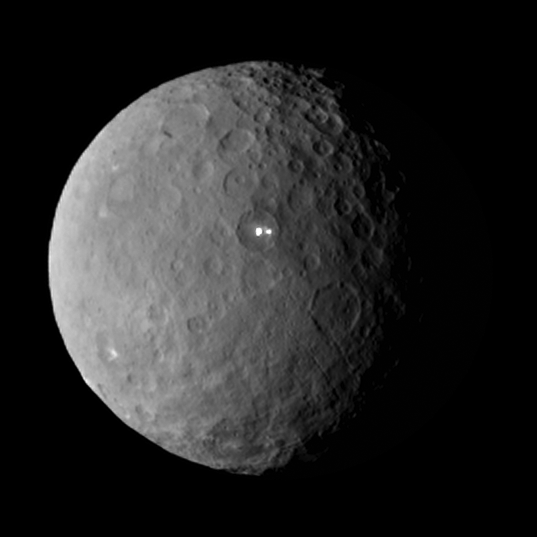Dawn probe passed the last before the approach to Ceres plantoid pictures

This Friday there should be a noticeable event in the world of astronautics and astronomy: the Dawn probe will go into the orbit of the Ceretoid planetoid, this is the largest body in the asteroid belt. At the moment, the probe has sent a lot of pictures, and the closer the device flies to the planetoid, the better the pictures are obtained.
In particular, it is already clear that the bright spots on the surface of Ceres are two, not one, the spots are located side by side, in the crater. By the way, the surface of Ceres is covered with a large number of craters of various shapes and sizes. In the continuation - an animation sequence showing us the different sides of Ceres, taken by the apparatus at different times.

')
Most of the pictures were taken on February 19 , when the device was at a distance of about 46 thousand kilometers. The full period of Ceres circulation around its axis is longer, takes about 9 hours. On the photographs it is noticeable that in addition to the two bright spots mentioned, there are other, less bright, but still stand out against a dark background (the albedo of the surface of Ceres is about 9%).
Video compiled from photographs of Ceres from various periods of the Dawn approach
When the probe goes into Ceres orbit, it will study the dwarf planet for about 16 months. The diameter of Ceres is about 950 kilometers. According to scientists, the surface of Ceres consists of a mixture of water ice and various kinds of hydrated minerals. Perhaps the core of the planetoid is stone, and below the surface there are liquid lakes or even seas.
Source: https://habr.com/ru/post/377119/
All Articles